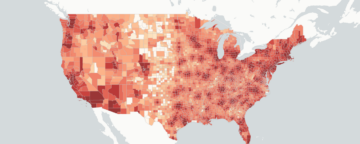PHILADELPHIA – Better driver training and closer parental supervision of young drivers could reduce some of the major risks that lead to teen driver crashes, according to a review of recent studies published online this month in the Journal of Adolescent Health.
Motor vehicle accidents are the leading cause of death among adolescents in the United States and most developed countries, and driver inattention is a major contributing factor. According to the paper “Adolescence, Attention Allocation, and Driving Safety,” most 17- and 18-year-olds have the cognitive and attentional capacity required to drive.
“A lot of crashes involving adolescent drivers are due to inexperience, as opposed to recklessness or the inability to pay attention to the road,” said Daniel Romer, Ph.D., lead author of the article and associate director of the Annenberg Public Policy Center (APPC) of the University of Pennsylvania. “Instead, they don’t always know what to pay attention to or how to recognize hazards, skills known as ‘situation awareness.’ These are among the many things young, novice drivers need to learn.”
The importance of supervised experience is supported by evidence that three-stage graduated driver licensing, including learner permits and provisional licenses, has cut the number of fatalities in crashes when young drivers are at the wheel. Policies to lengthen the period of supervised driving would be effective in helping teens develop driving experience and important skills such as scanning for hazards, while under the watchful eye of a parent or other adult, the review suggested.
Computer-based training programs also were found to be a promising approach to train young drivers to recognize hazards, act on the ones that they see, and limit their time on activities that divert their attention, such as using phones or adjusting in-vehicle controls.
“It only takes three seconds of inattentive driving to turn ‘I saw it coming’ into ‘It happened so fast, there was nothing I could do,’” said Flaura K. Winston, M.D., Ph.D., a review co-author and scientific director of the Center for Injury Research and Prevention (CIRP) at the Children’s Hospital of Philadelphia. “When driving while distracted, you rob yourself of this time cushion. You miss relevant cues, and then, in what you think of as a blink of an eye, you are in a crash that could have been avoided.”
For the complete news release, click here. The abstract to the study can be found here.

